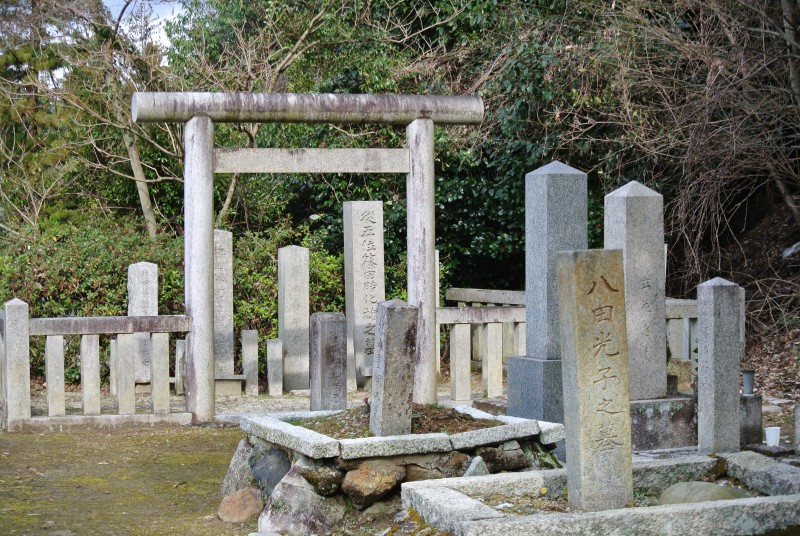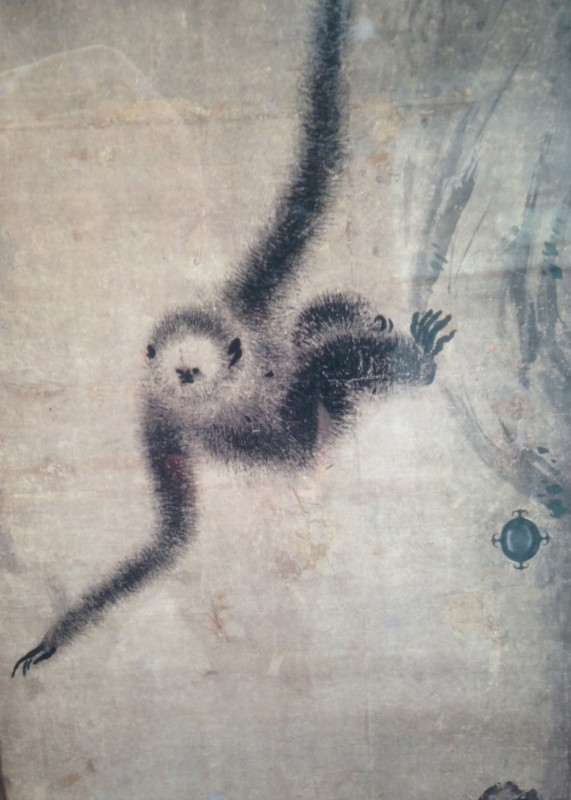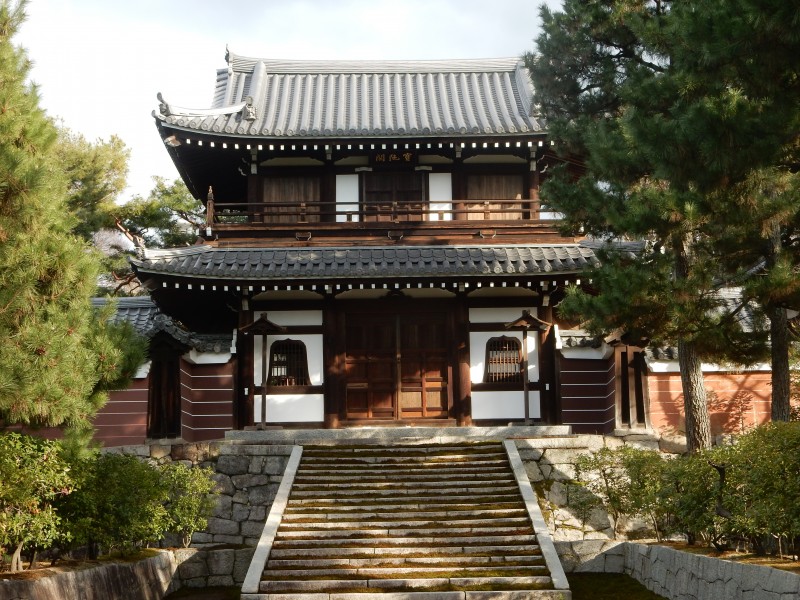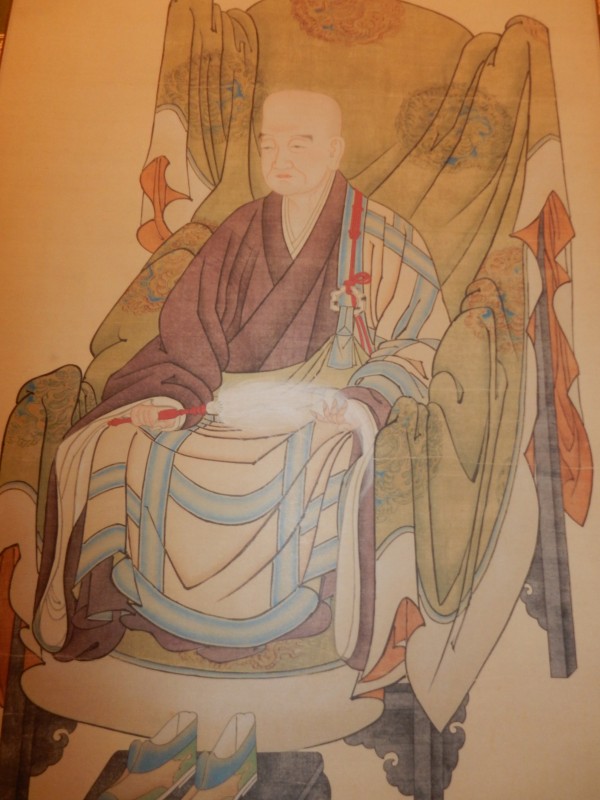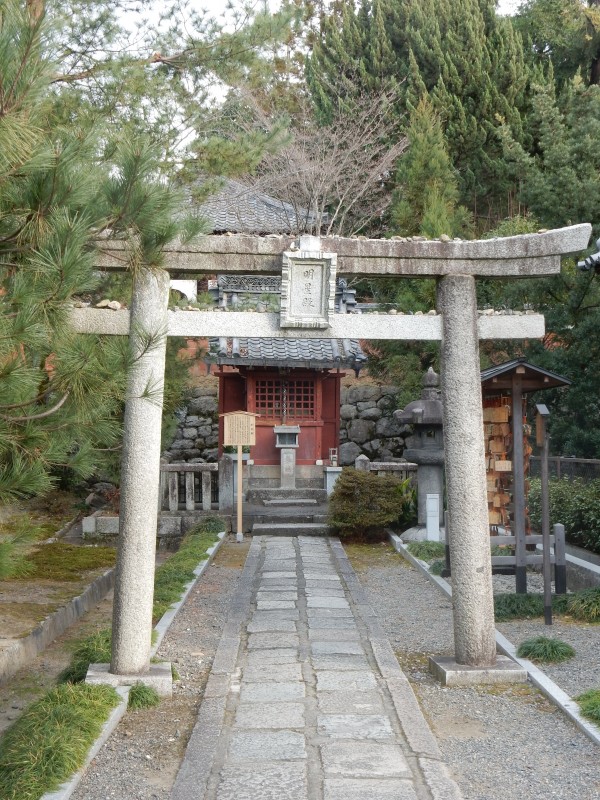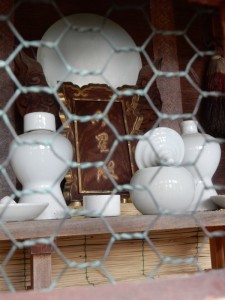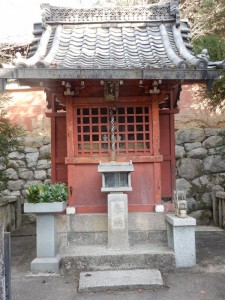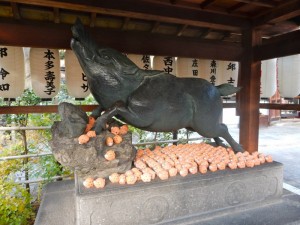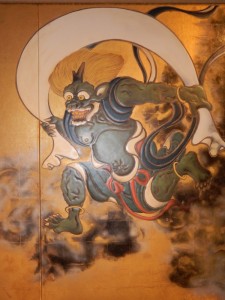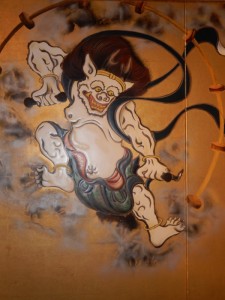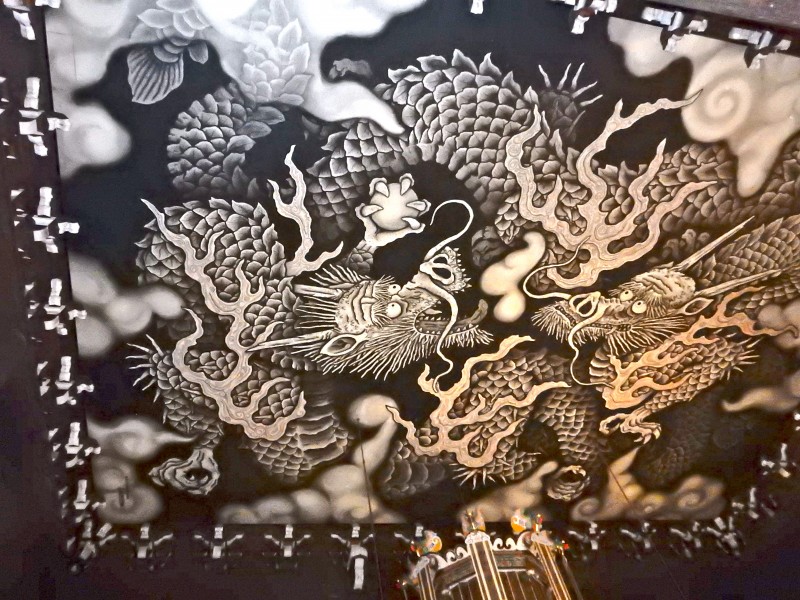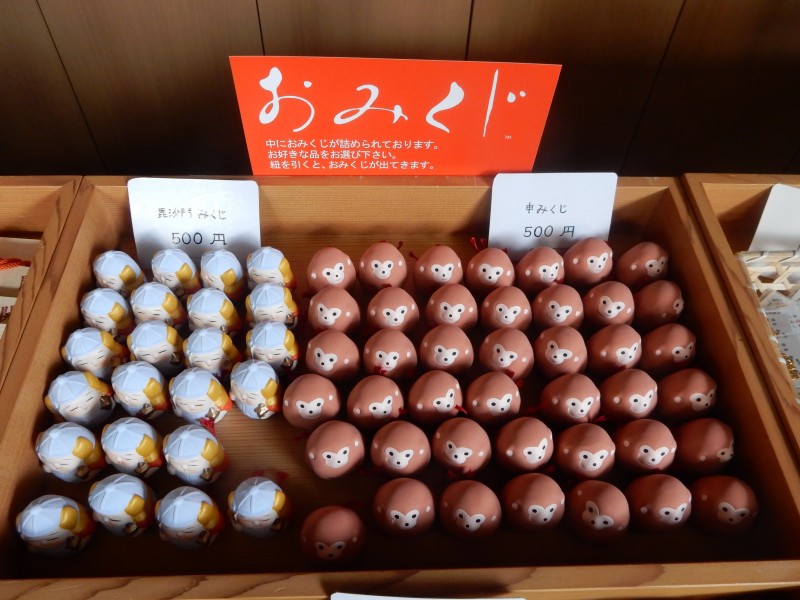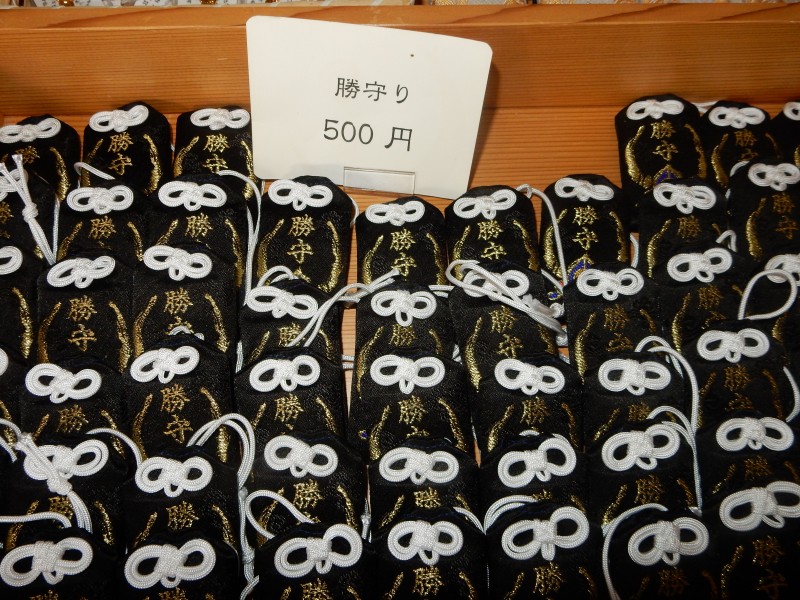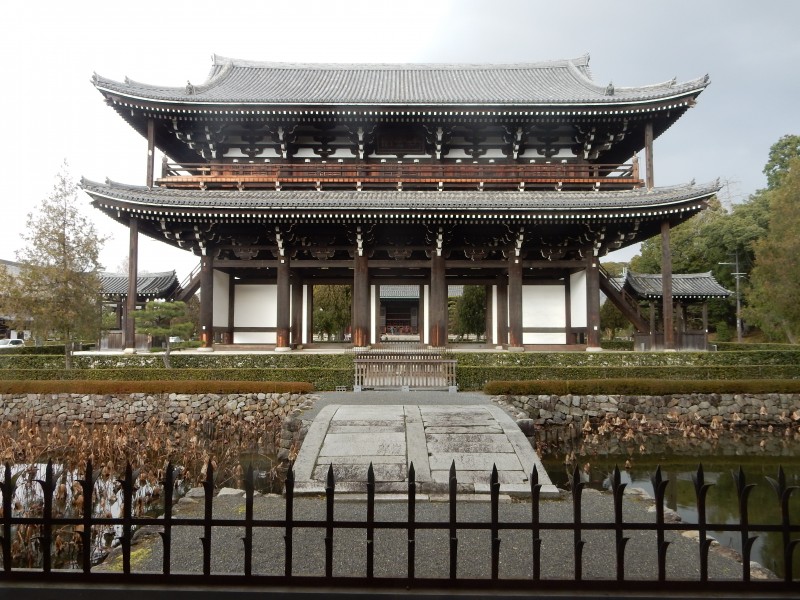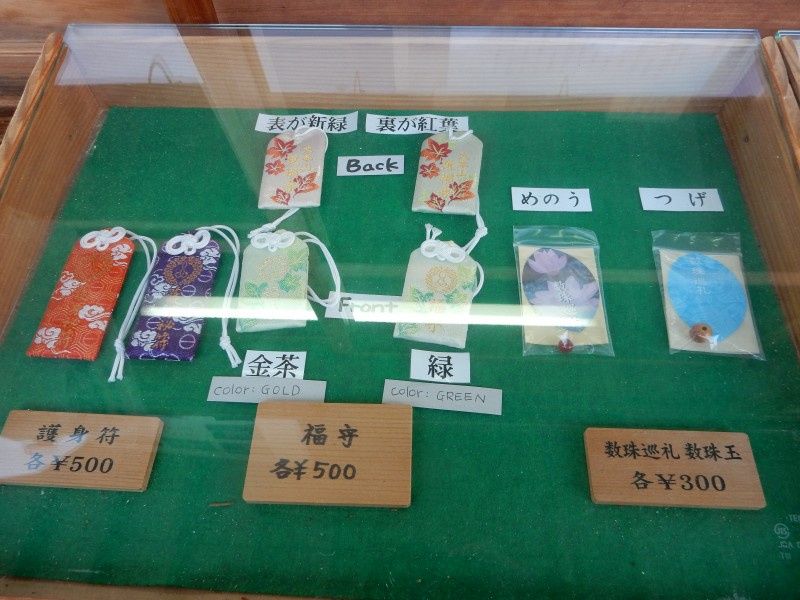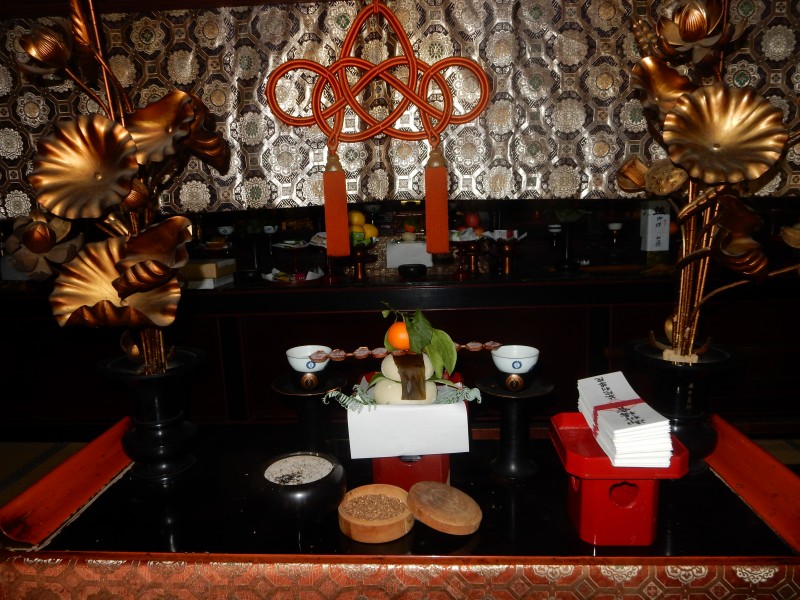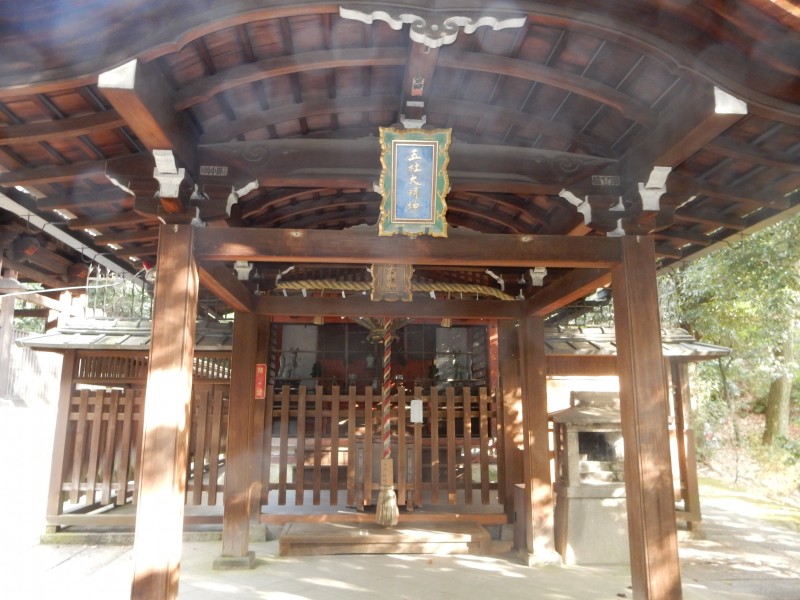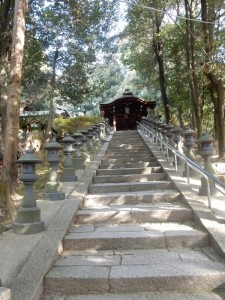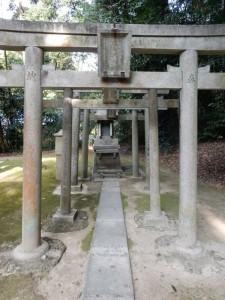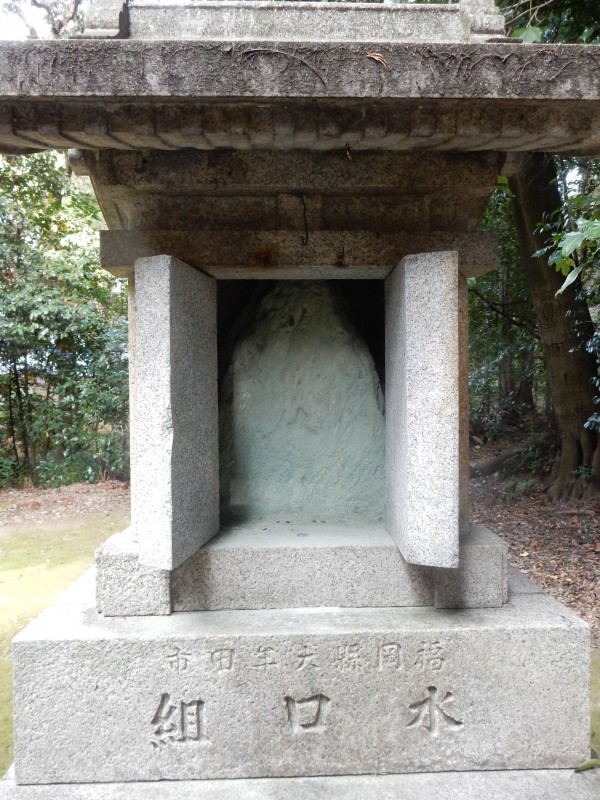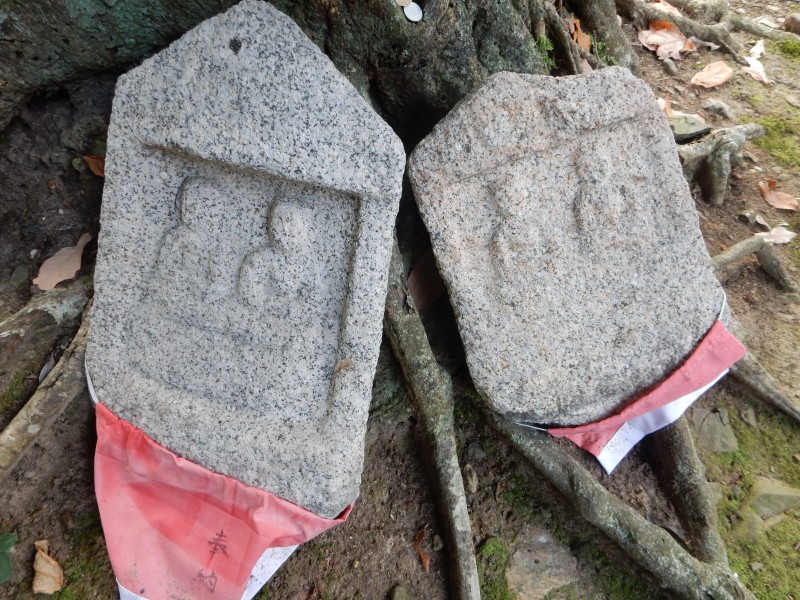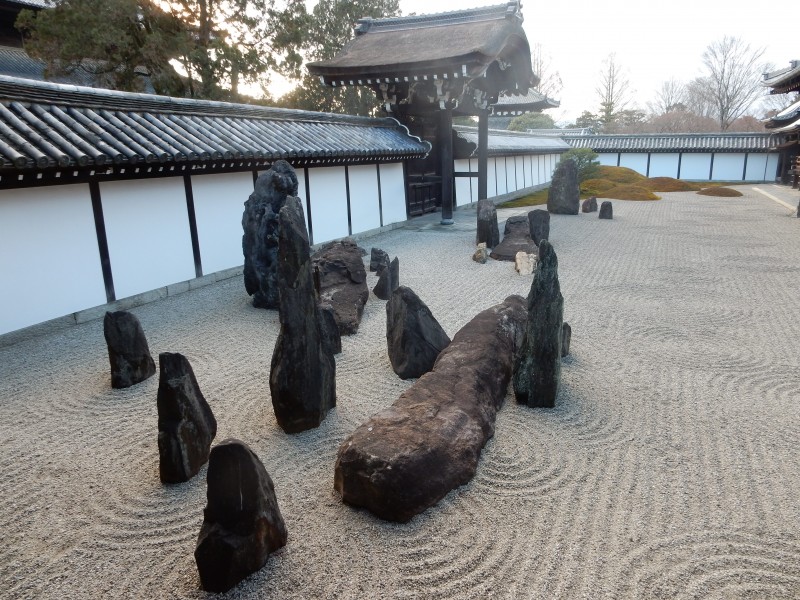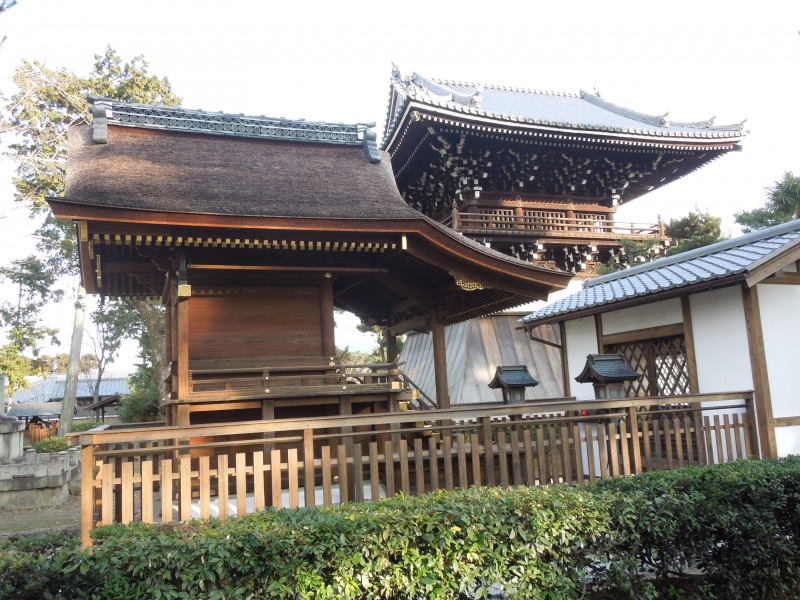
Characteristic Shinto and Buddhist roofs next to each other at Shokoku-ji. In the foreground a shingled roof on the Sanctuary of a Benzaiten shrine, in the background the tiled roof of the Zen temple’s belltower.
Shokoku-ji was established in 1383 as a shogunate showpiece, but not long after completion burnt down and had to be completely rebuilt. It ranked second among the Five Gozan temples and played a prominent part in furthering Zen culture. It also accrued valuable assets, such as ownership of the Gold and Silver Pavilions. Severely reduced in size in Meiji times, it is now a relatively peaceful area behind Doshisha University and hosts the association offices for the schools of Rinzai and Obaku Zen.
The temple is said to be the wealthiest of Kyoto’s seven large monasteries, which is why it can afford to show less concern with tourist income. Though the grounds are free to visit, the only building usually open to the public is the museum. A notice posted on the main building says: ‘Please respect the temple precincts, garden and environment as a religious space. You will acquire Buddha’s providence from the bottom of our heart.’
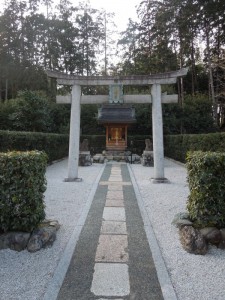
Hachiman Shrine at Shokoku-ji, an appropriate kami for a temple founded by samurai
The monastery was set up as a personal project by the powerful shogun, Ashikaga Yoshimitsu (founder of the Golden Pavilion), with a location close to his Muromachi palace. To make space for the massive estate, locals were forced out of their homes: ‘Shokoku-ji was built on people’s grief,’ ran a saying of the time. Construction took nine years to complete and involved the felling of Kyoto’s oldest cedar and cypress trees.
The original layout can be seen in the positioning of the lotus pond along a central axis on which stand the Hatto (Lecture Hall) and the Hojo (Abbot’s Quarters). Noticeably missing however are the Sanmon gate and Buddha Hall, both destroyed by fire in 1788 and never replaced. In their stead are red pine trees, giving the precincts a distinctive wooded feel.
Of the thirteen buildings in the main compound three are tutelary shrines honouring Japanese kami; Hachiman, Benten and Inari. Two of the shrines stand either side of an impressive bell-tower, one of which is dedicated, uniquely, to a white fox which impersonated tea-master Sotan, grandson of Sen no Rikyu. Legend has it that to the astonishment of participants the fox served tea at a ceremony held at the temple.
Close to Shokoku-ji is a Nichiren temple which also shows close ties to the kami (see pics below). Not only does a tutelary shrine to Myoken stand close to the entrance, but its temple gate is festooned with shide paper strips. It’s a reminder that kami worship remains an active part of contemporary Buddhism, in sects other than Zen – Tendai and Shingon, for instance, as well as Nichiren. (The Pure Land sects are less kami-friendly.)
I can’t help wondering why the numerous syncretic shrines of Buddhism are completely overlooked in books on Shinto. The obvious answer is that they belong to Buddhism rather than Shinto. Fair enough. But if the religion is defined as ‘kami worship’, as it often is, then surely these kami worshipping shrines deserve greater attention. One aspect that could be drawn out is the universalism of Buddhism versus the particularism of Shinto, and as I continue my probings into the relationship I hope to be talking to some Buddhist priests about their thoughts regarding the kami.
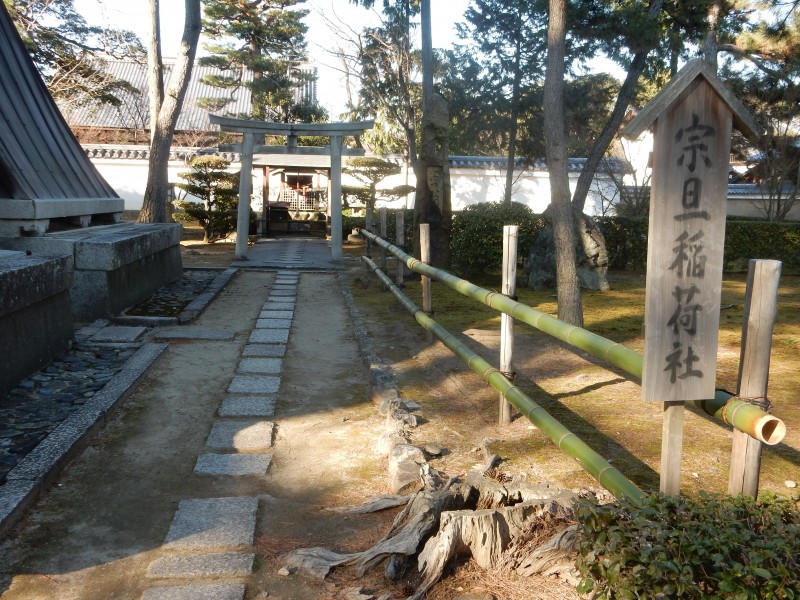
The Sotan Inari-sha, built to honour a white fox
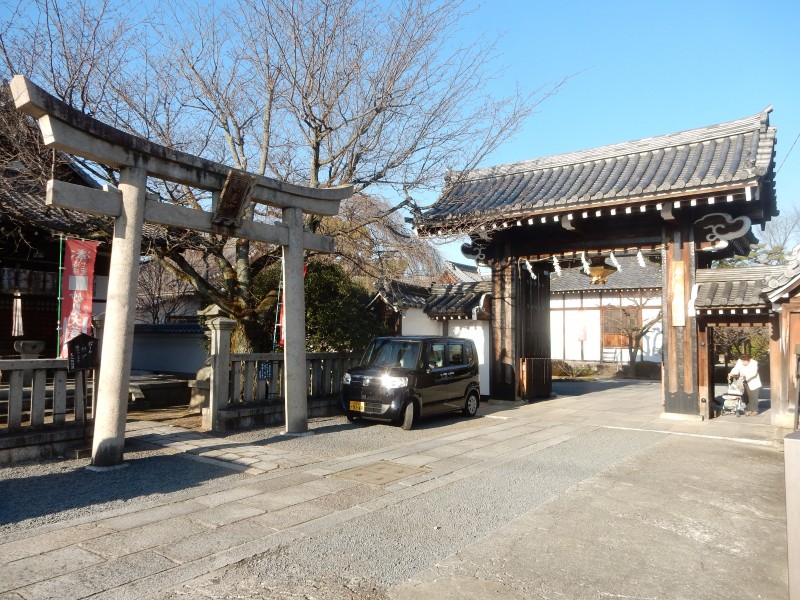
Nichiren temple gate (Honman-ji) with adjacent torii (and visible means of transport between them!)
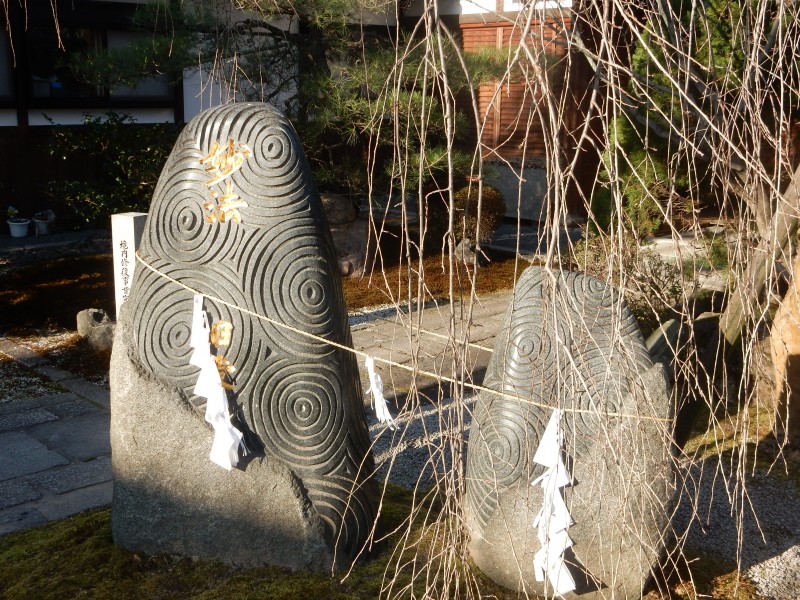
Sacred rocks have long been part of the Shinto tradition. These are Buddhist, as indicated by the whorls.
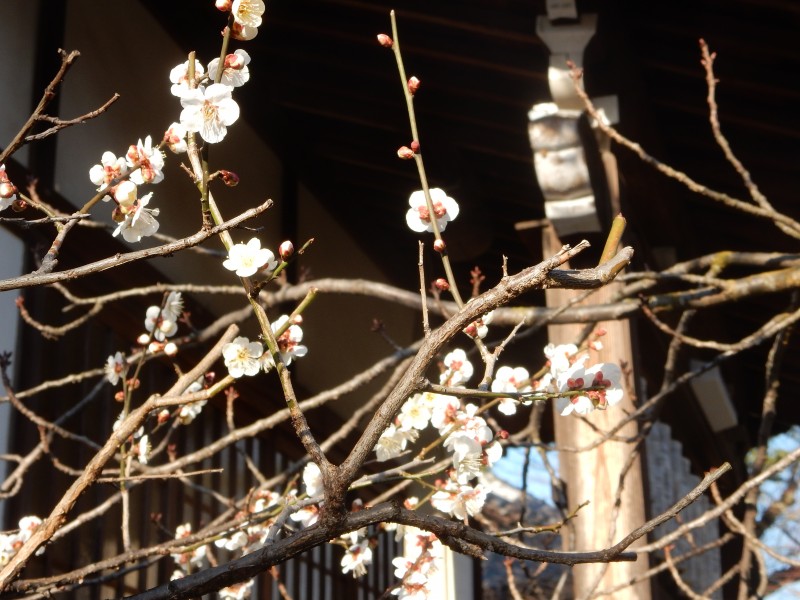
Seasonal awareness is part of the Japanese tradition too, both Shinto and Buddhist. The plum blossom have been out early this year, this example found basking in the sun at Shokoku-ji – a reminder that one of Kyoto’s most popular festivals, the large Plum Blossom Festival at Kitano Tenmangu, will be held soon on the 25th.

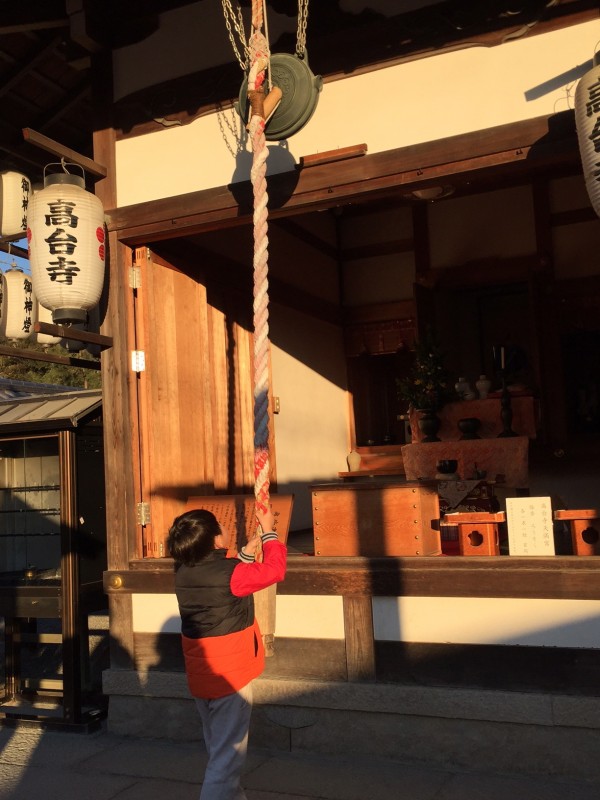
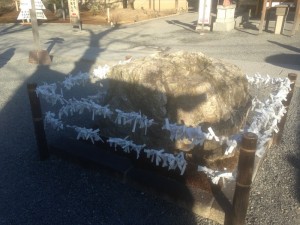
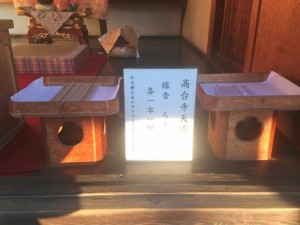
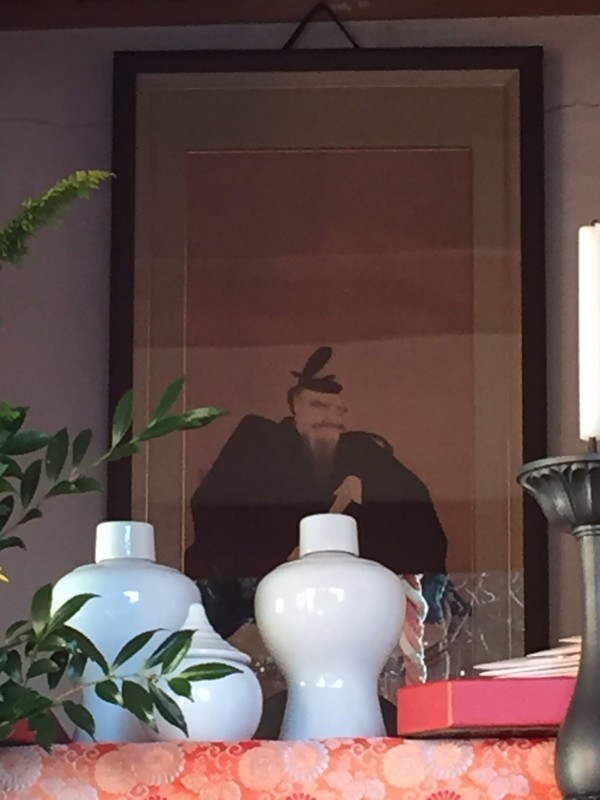
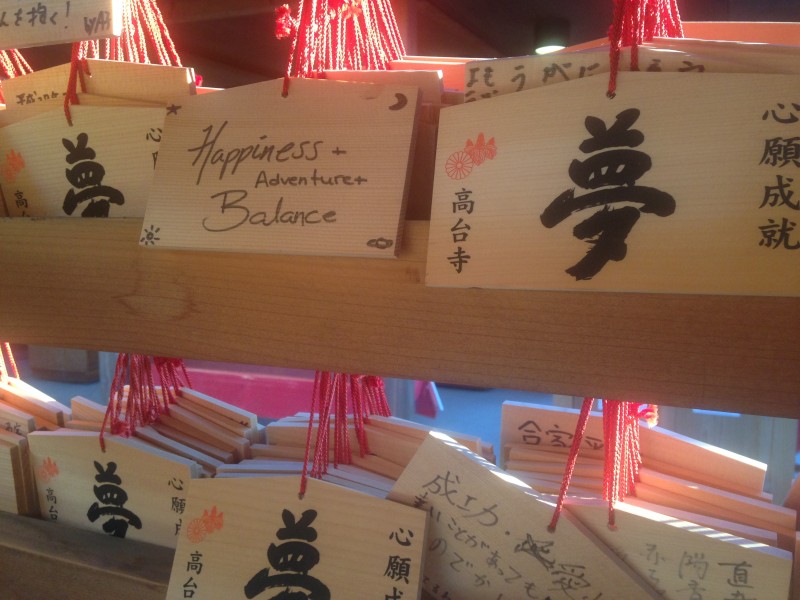
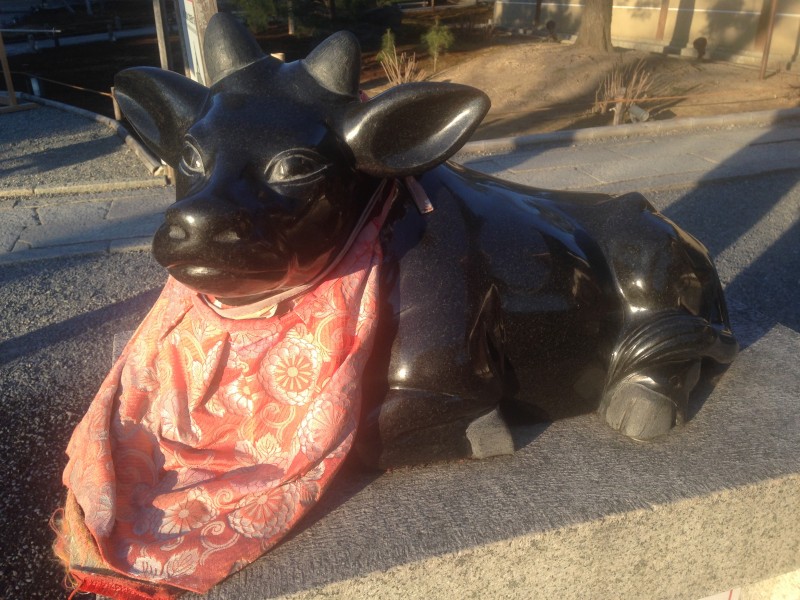
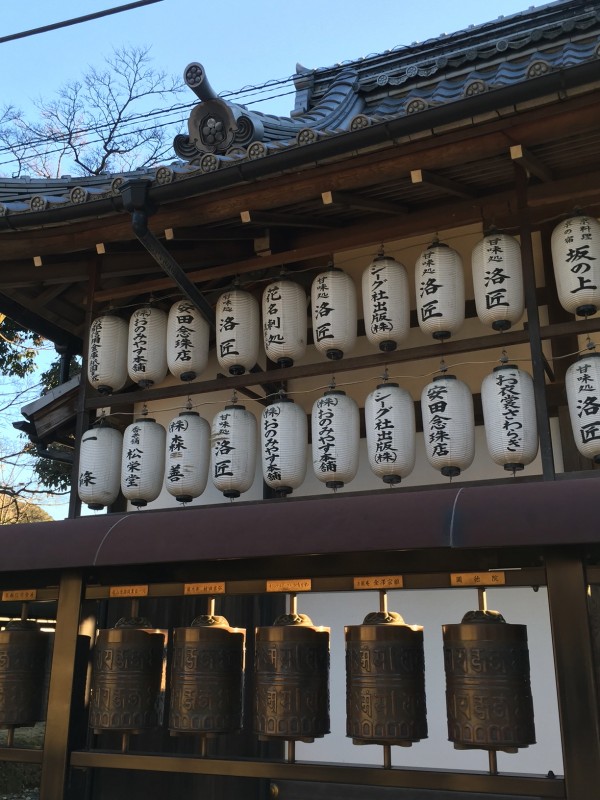
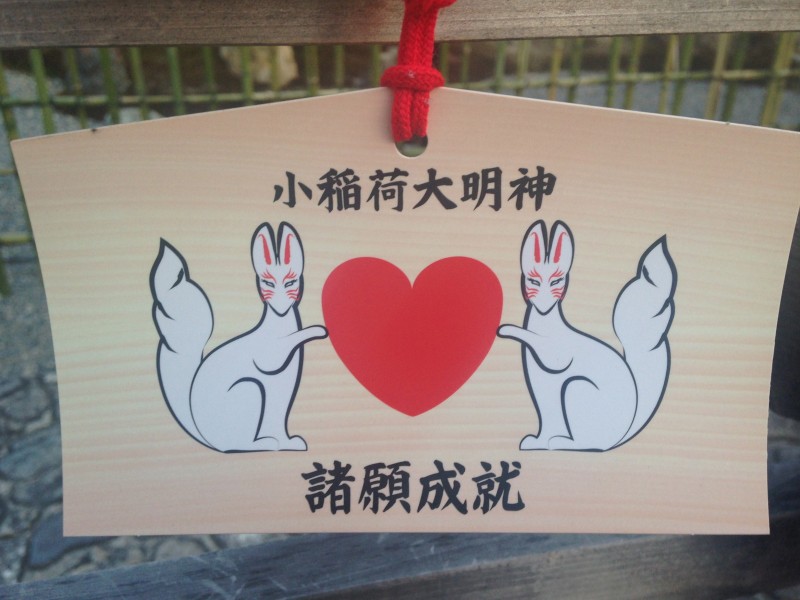
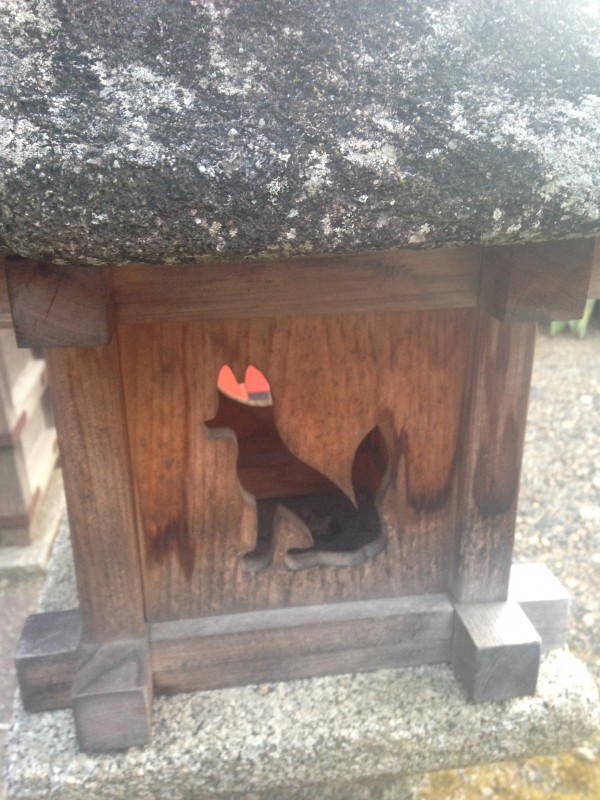
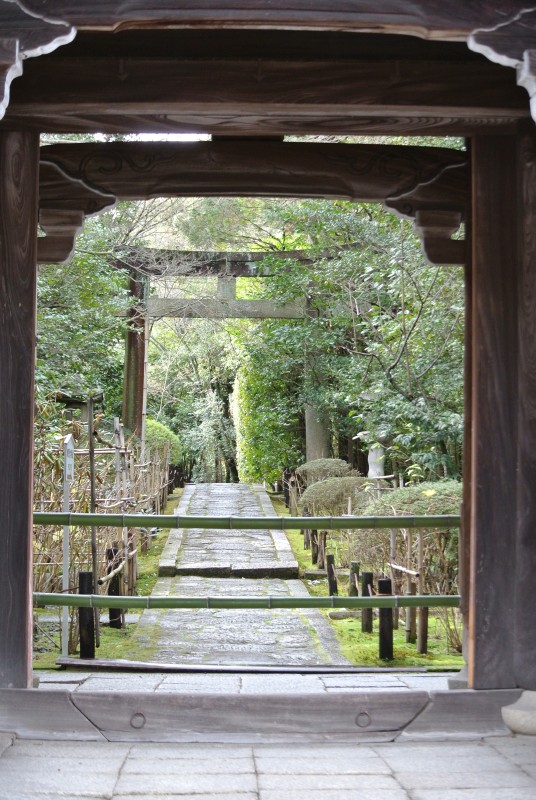
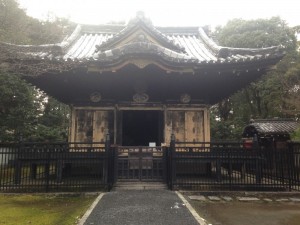
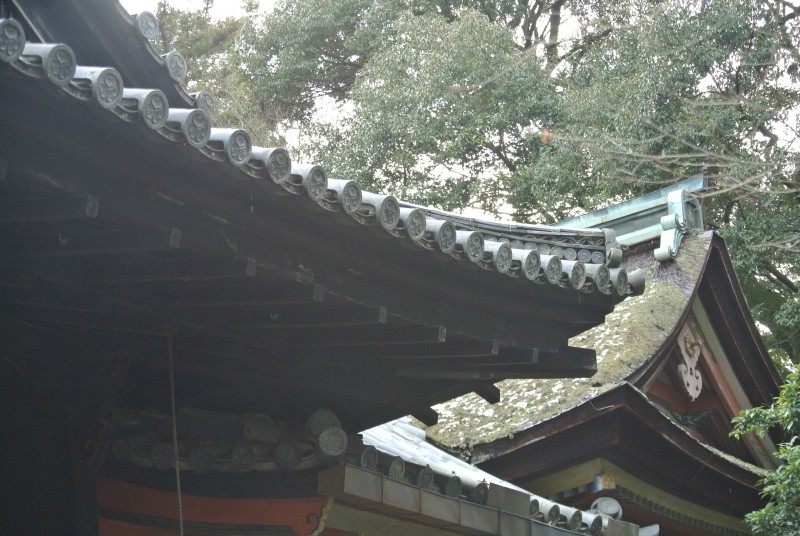
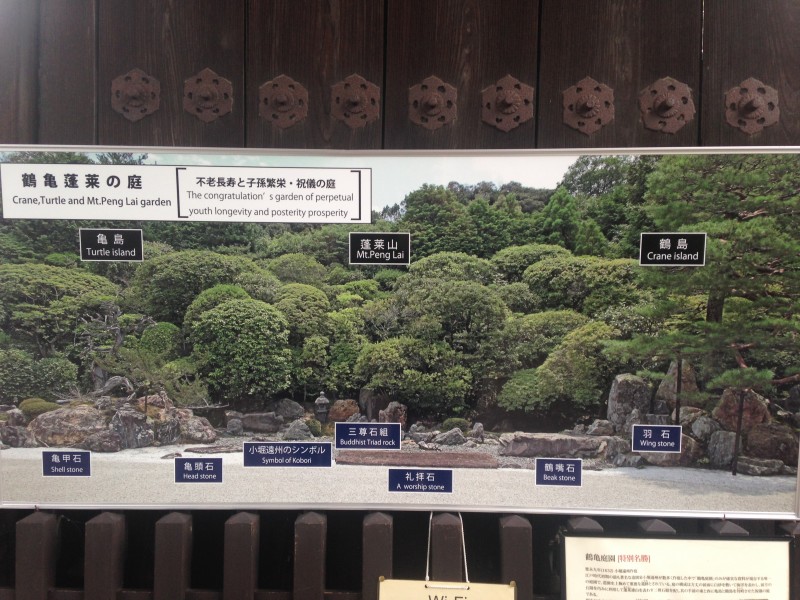 It’s the year of the monkey, which makes it a particularly apt time to visit the subtemple because of the celebrated fusuma-e painting by Hasegawa Tohoku that it houses (see below). It shows a monkey reaching out to grasp a reflection of the moon reflected in the pond below. It’s a telling Buddhist parable about chasing after illusion.
It’s the year of the monkey, which makes it a particularly apt time to visit the subtemple because of the celebrated fusuma-e painting by Hasegawa Tohoku that it houses (see below). It shows a monkey reaching out to grasp a reflection of the moon reflected in the pond below. It’s a telling Buddhist parable about chasing after illusion.